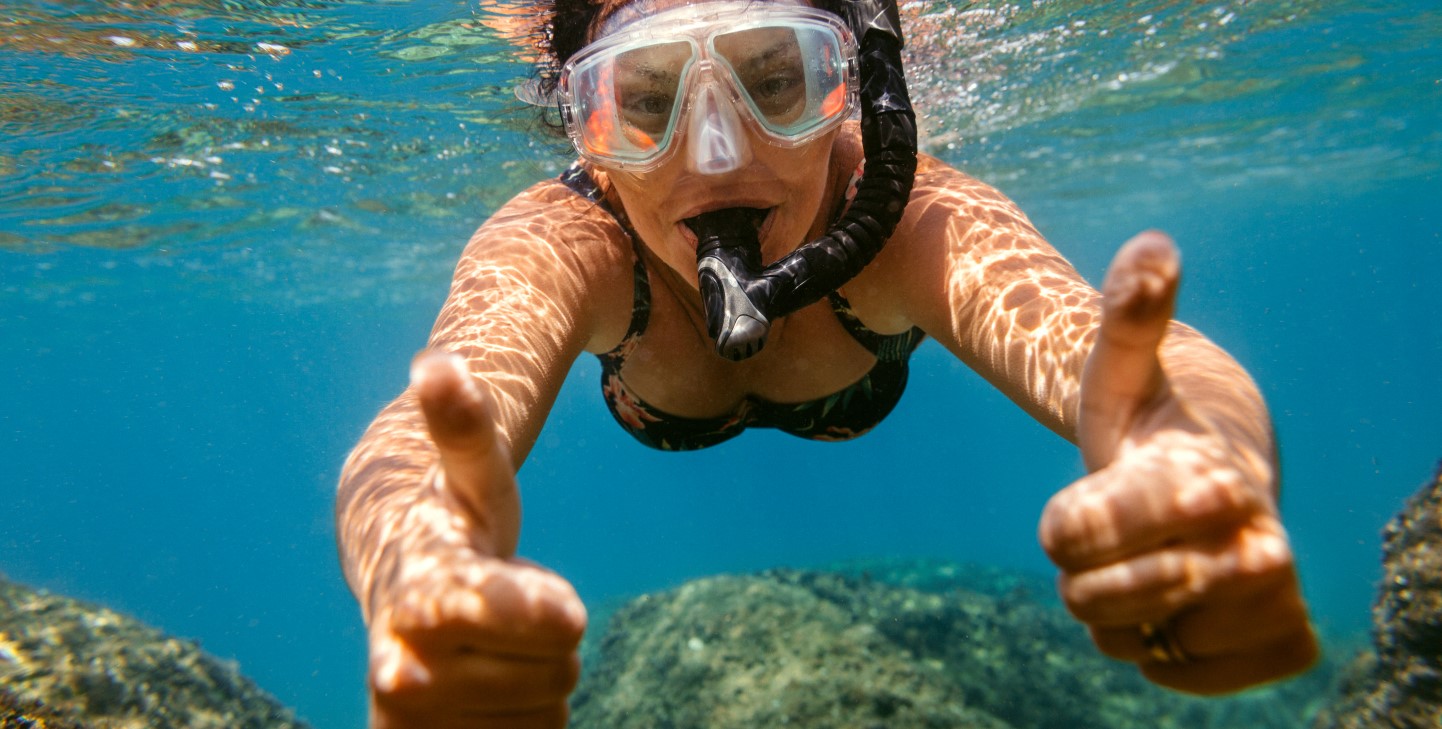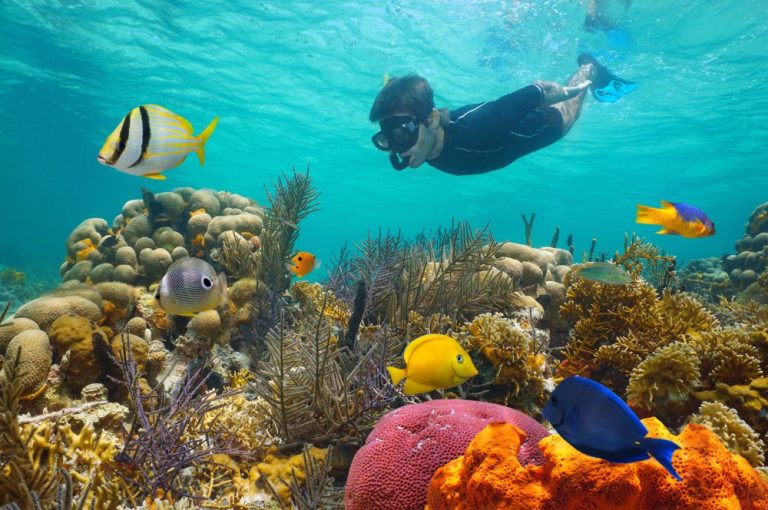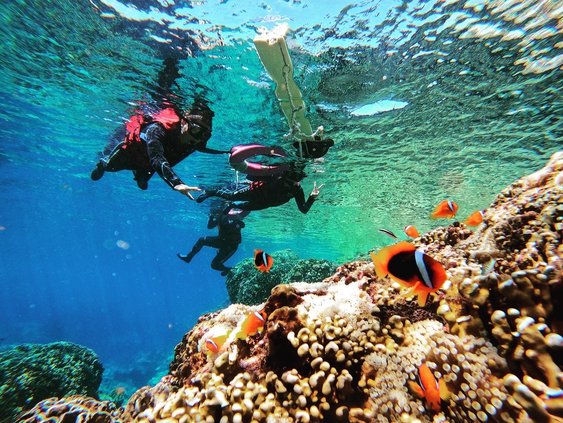Dive Wisely, Snorkel Safe: Crucial Safety Practices for Memorable Undersea Experiences
With its colorful coral reefs and intriguing marine life, the undersea world is irresistibly alluring, particularly in the stunning waters around Tagum, Davao Region, Philippines. Safety should always come first, whether you’re using scuba gear to dive into the depths or a snorkel to glide smoothly at the surface. In addition to shielding you from potential risks, a careful and informed approach will enable you to really enjoy the water realm’s magnificence. Let’s Trek It dives deep into the essential safety procedures for both diving and snorkeling, providing you with the knowledge and awareness needed for safe and unforgettable underwater adventures in our stunning local waters.
I. Snorkelling Safety: Gliding Safely at the Surface
Snorkelling, while seemingly simple, still requires adherence to important safety guidelines:
- Choose Properly Fitting Gear: As emphasized in our beginner’s guide, a well-fitting mask, comfortable snorkel, and appropriate fins are crucial. A leaky mask can be frustrating and impede your ability to see clearly, while an ill-fitting snorkel can allow water to enter easily. Fins that are too loose can slip off, and those too tight can cause discomfort and cramping.
- Practice in Shallow Water First: Before venturing into deeper areas or strong currents, take time to get comfortable with your gear in shallow water where you can easily stand. Practice breathing through your snorkel, clearing your mask and snorkel of water, and getting used to the feel of fins.
- Never Snorkel Alone: Always snorkel with a buddy. This allows you to keep an eye on each other and provide assistance if needed. If one person encounters a problem, the other can signal for help.
- Be Aware of Your Physical Limits: Snorkelling can be more strenuous than it appears, especially if you’re fighting currents or swimming for extended periods. Know your limits, take breaks when needed, and don’t push yourself beyond your comfort level.
- Assess Water Conditions: Before entering the water, check for strong currents, waves, and any potential hazards like boat traffic, sharp rocks, or stinging marine life. Be particularly cautious in areas with strong tides. Local knowledge, especially from experienced guides in Tagum, is invaluable here.
- Stay Hydrated: Even though you’re in the water, you can still become dehydrated, especially in the tropical climate of the Philippines. Drink plenty of water before and after your snorkelling session.
- Protect Yourself from the Sun: The sun’s rays are intensified by the water. Wear a rash guard or t-shirt, apply waterproof sunscreen liberally to exposed skin (including your back!), and consider wearing a hat while on the surface.
- Know How to Signal for Help: Establish a clear signal with your buddy in case of an emergency. Waving your arms overhead is a universal distress signal.
- Be Mindful of Marine Life: Observe marine creatures from a respectful distance. Never touch, chase, or feed them. Some marine life can be harmful if provoked. Familiarize yourself with potentially hazardous species in the Tagum area.
- Enter and Exit the Water Safely: Use designated entry and exit points, such as ladders or sandy beaches. Be cautious of slippery surfaces and strong surges.
II. Diving Safety: Exploring the Depths Responsibly
Scuba diving opens up a whole new dimension of underwater exploration, but it also requires comprehensive training and strict adherence to safety procedures:
- Get Properly Certified: Never dive without proper certification from a recognized diving agency (e.g., PADI, SSI). Certification courses provide you with the essential knowledge and skills for safe diving practices.
- Dive Within Your Certification Level: Your certification level dictates the depths and conditions you are qualified to dive in. Respect these limitations and don’t attempt dives beyond your training and experience.
- Always Dive with a Buddy: Diving with a certified buddy is a fundamental safety rule. You can rely on each other for assistance, equipment checks, and in case of emergencies.
- Conduct Thorough Pre-Dive Checks: Before every dive, perform a comprehensive buddy check (BWRAF: BCD, Weights, Releases, Air, Final Check). Ensure all your equipment is functioning correctly and that you and your buddy are familiar with each other’s gear.
- Plan Your Dive and Dive Your Plan: Before entering the water, discuss your dive objectives, maximum depth, bottom time, and emergency procedures with your buddy. Stick to the agreed-upon plan.
- Monitor Your Air Supply and Depth: Regularly check your submersible pressure gauge (SPG) to ensure you have sufficient air. Pay close attention to your depth gauge and avoid exceeding your planned maximum depth.
- Ascend Slowly and Make Safety Stops: Ascend at a safe rate (typically no faster than 30 feet per minute) to allow nitrogen to safely leave your body. Always make a safety stop at 15 feet for 3-5 minutes on every dive, especially those deeper than 30 feet.
- Understand and Avoid Decompression Sickness (DCS): Learn the signs and symptoms of DCS (“the bends”) and follow dive tables or dive computer guidelines to stay within no-decompression limits. Avoid flying or ascending to high altitudes immediately after diving.
- Be Aware of Marine Life Hazards: While most marine life is harmless, some species can be venomous or aggressive if provoked. Maintain a safe distance and never attempt to touch or harass marine animals. Be aware of local hazards in the Tagum area, such as stonefish or lionfish.
- Dive Within Your Physical Limits and Medical Fitness: Diving can be physically demanding. Ensure you are in good health and free from any medical conditions that could be aggravated by diving. Consult your doctor if you have any concerns.
- Choose Reputable Dive Operators: Select dive centers in Tagum that have a strong safety record, well-maintained equipment, and experienced, certified dive professionals.
- Listen to Your Dive Instructor or Guide: They have local knowledge and expertise that can enhance your safety and enjoyment.
III. Local Considerations for Diving and Snorkelling in Tagum, Davao Region, Philippines:
- Familiarize Yourself with Local Marine Life: Be aware of any specific marine creatures in the Tagum area that might pose a risk, such as certain types of jellyfish or sea urchins.
- Respect Local Marine Protected Areas (MPAs): Adhere to all regulations and guidelines within MPAs to help conserve the delicate reef ecosystems.
- Support Sustainable Tourism Practices: Choose operators who are committed to environmentally responsible diving and snorkelling.
- Be Aware of Currents and Tides: The waters around Tagum can experience varying currents and tides. Seek local advice on potential conditions.
Conclusion: Embrace the Underwater World with Confidence and Caution
The underwater realm of Tagum, Davao Region, Philippines, offers incredible beauty and adventure for both snorkelers and divers. By understanding and adhering to these essential safety procedures, you can minimize risks, protect yourself and your buddy, and fully immerse yourself in the wonders beneath the waves. Remember that preparation, awareness, and respect for the marine environment are key to safe and unforgettable underwater experiences. Let’s Trek It encourages you to dive smart and snorkel safe, creating memories that will last a lifetime while ensuring the preservation of our precious marine ecosystems.




Hi, this is a comment.
To get started with moderating, editing, and deleting comments, please visit the Comments screen in the dashboard.
Commenter avatars come from Gravatar.